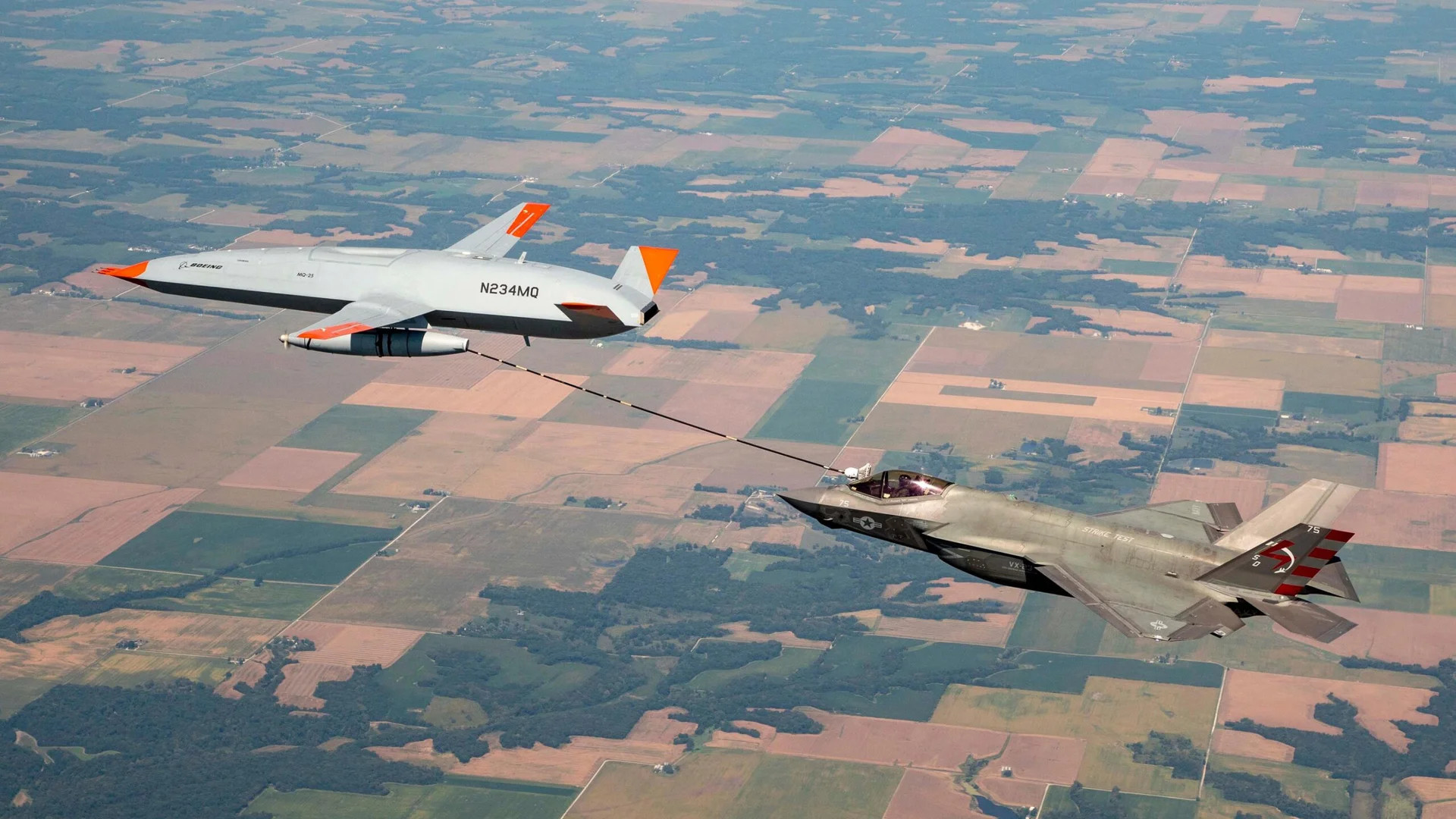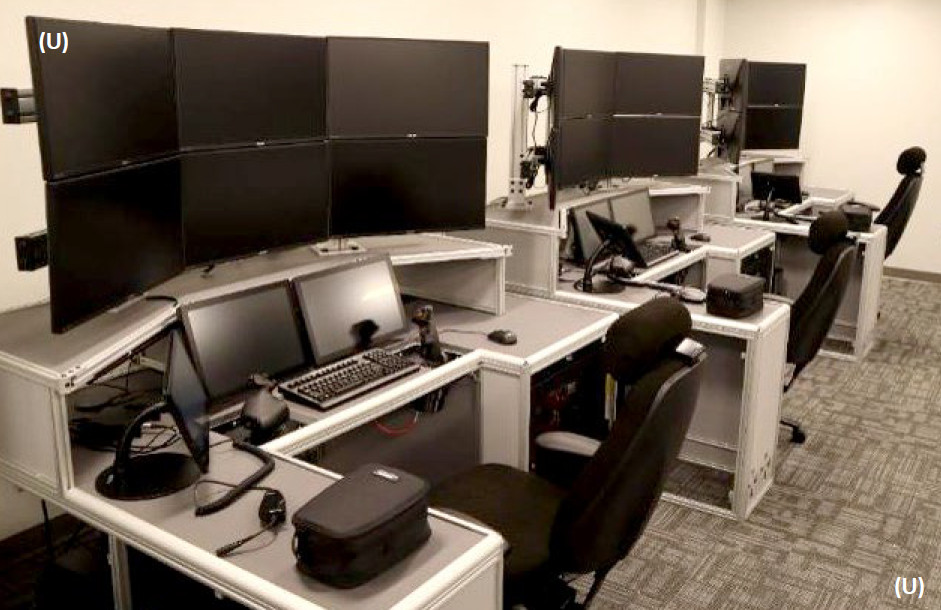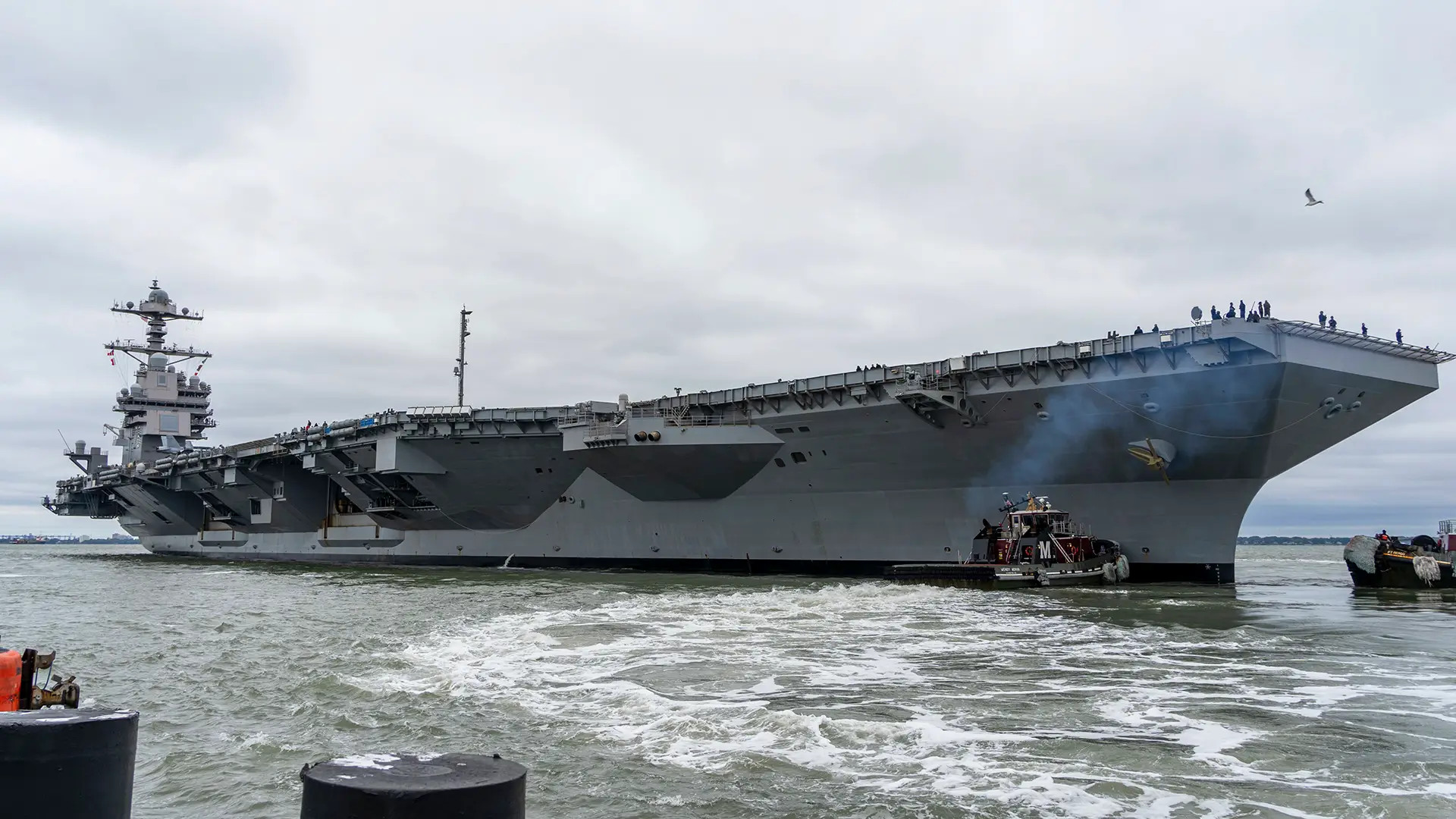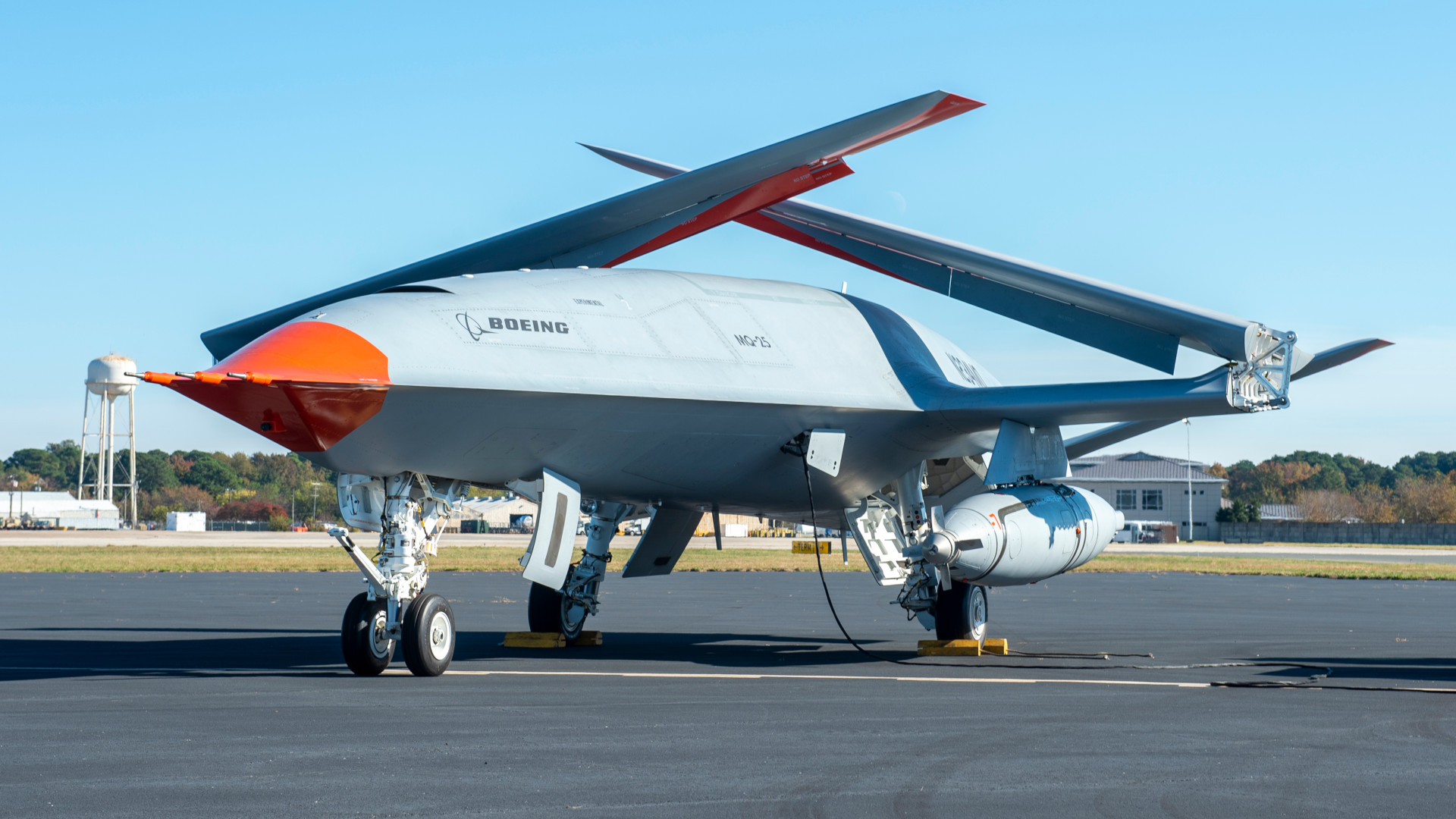A top Pentagon watchdog has raised concerns that the U.S. Navy is pushing ahead too fast in its plans for the MQ-25 Stingray tanker drone, and inviting new risks in doing so, in a new report. Separately, the U.S. military has announced that Boeing is being given an additional $36 million to support the MQ-25’s continued development specifically to help “mitigate component obsolescence” in six subsystems as part of a preliminary design review.
The Department of Defense’s Office of Inspector General, or DODIG, released a partially redacted audit of the Navy’s management of the MQ-25 program yesterday.

“Navy officials, in coordination with the Program Office, plan to make critical production decisions for the MQ‑25 program before the Program Office conducts tests and evaluations to verify that the program meets operational capability requirements,” the review’s executive summary says. “Making critical production decisions without performing DT&E [developmental test and evaluation] and IOT&E [initial operational test and evaluation] increases risk that the MQ‑25 program will not meet operational capability requirements, delay deployment of the MQ‑25A to the CVNs, and increase program costs.”
The Navy selected Boeing’s design as the winner of the Carrier-Based Aerial-Refueling System (CBARS) competition in 2018 and the current plan is to acquire 76 MQ-25As. This total consists of seven production-representative examples, 12 low-rate initial production (LRIP) models, and 57 more across a number of full-rate production lots, according to DODIG.
Nimitz and Ford class aircraft carriers are also set to receive a ground control station where human operators will be able to oversee MQ-25 flights as part of the complete program. Additional ground control stations will be installed elsewhere for testing, training, and other purposes.

“The MQ‑25 program is an acquisition category 1B Major Defense Acquisition Program with an estimated cost of $16.5 billion, including $3.1 billion for research, development, test, and evaluation, $12.6 billion for procurement, and $747.5 million for military construction,” according to DODIG’s review. Navy budget documents estimate that the average unit cost for each MQ-25 will be just under $150 million, not counting various ancillary items.
“The Deputy Secretary of Defense designated the MQ‑25 program as a Key Performance Parameter Reduction Pilot Program, which allows the Navy to focus on fewer primary operational capability requirements than the six that were required at program designation,” DODIG’s report adds.
The Navy only has two stated operational requirements for the MQ-25, at least up front, one of which is that it be capable of operating from both Nimitz and Ford class aircraft carriers. The second is particularly redacted in DODIG’s new report.
A separate Selected Acquisition Report on the MQ-25 program as of the end of the 2022 Fiscal Year, which the Pentagon released earlier this year, includes unredacted details about the second requirement. The Stingray’s has to be able to offload at least 14,000 pounds of fuel, and hopefully up to 16,000 pounds, up to 500 nautical miles away from the carrier.
The stated primary purpose of the MQ-25A is to help extend the effective range of the carrier air wing and to eliminate the need for some of the F/A-18E/F Super Hornets in existing carrier air wings to perform tanker duties, according to the Navy. The first element here extends the carrier’s reach and helps keep it away from enemy defenses, both of which would be especially critical in a future high-end conflict in the Pacific against China. Relieving the Super Hornets from their tanking duties will separately help reduce the burden on those aircraft, which the service hopes will translate to cost savings and increased readiness across the Super Hornet fleet.

The Navy has identified a secondary intelligence, surveillance, and reconnaissance mission for the MQ-25, as well.
“In addition, as the first CVN-based unmanned air vehicle, the MQ‑25A is a crucial step in the Navy meeting its goal of having 60 percent of its CVN air wings unmanned by 2040,” DODIG’s report notes. “Therefore, the Chief of Naval Operations stated that it was critically important to deploy the MQ‑25A on CVNs as quickly as possible.”
CVN is the abbreviation the Navy and many other world navies use to refer to nuclear-powered aircraft carriers like the Nimitz and Ford classes.
Many of the specific schedule dates and timelines that are of concern to DODIG are redacted in its report yesterday. However, it is clear that the Pentagon watchdog is concerned that the schedule the Navy is working with could be dangerously truncated.
“As a result of Navy officials not performing DT&E before the MS‑C [Milestone C production] decision and IOT&E before the IOC [initial operational capability] decision, there is an increased chance that the MQ‑25 program will not meet its operational capability requirements,” the report says bluntly. “In addition, there is a risk that when DT&E and IOT&E do occur, after production has begun and after the Navy has declared IOC, respectively, the program will identify issues that are costly and delay the deployment of the MQ‑25A to the CVNs.”
Though not explicitly said, this latter point refers to a process typically called “concurrency,” which has created serious issues for a number of major U.S. military programs. The Navy’s Littoral Combat Ship (LCS) program has notably suffered issues related to concurrency and the service should also be well aware of the potential pitfalls from experiences as part of the F-35 Joint Strike Fighter program.
Concurrency has also been a factor for the supercarrier USS Gerald R. Ford. The ship is set to be distinct in many key respects, including in its radar configuration, from subsequent Ford class carriers now under construction.

The Navy contends that it has taken a number of steps to mitigate many of these risks, according to DODIG’s new review. This includes extensive testing using an actual flying demonstrator, referred to as T1, as well as extensive digital modeling and simulation.
It is worth noting here that digital engineering tools have been held out inside the U.S. military and among private industry as potentially revolutionizing the development process of complex systems, including aircraft in recent years. However, while digital engineering has proven to be very useful, there is now growing skepticism about the true extent of the benefits it offers. The T-7A Red Hawk jet trainer Boeing is developing for the Air Force is often presented as a poster child for digital engineering, but has also now become a key example critics cite of the inability of those tools to live up to the hype.

DODIG says the Navy provided it with updated risk and schedule assessments, but that it believes the service needs to further review its plans.
“We request that the Navy confirm that the Program Office will provide updated risk management documentation regarding the MQ‑25A delays that would include identifying all the risks associated with experiencing further delays in receiving the MQ‑25As and the risk that the MQ‑25 program misses the expected deployment dates,” the report released yesterday says.
What is certainly not a subject of debate is that the MQ-25 program, for a variety of reasons, including impacts resulting from the COVID-19 pandemic, has already been significantly delayed and that costs have grown. When Boeing won the CBARS competition in 2018, the expectation was that the Navy would reach IOC with the MQ-25 in 2024. That schedule slipped first to 2025 and just this year was pushed back again to 2026. DODIG’s report indicates that this most recent delay was a by-product of efforts by the Navy to try to resolve its concerns at the beginning of 2023.
“We are encouraged that the Navy has adopted a more traditional acquisition strategy, delayed the MS‑C decision and the LRIP contract, and is continuously assessing and communicating programmatic risks,” DODIG’s audit says.
The hope had been in the past that the initial batch of pre-production Stingrays would start being delivered by the end of 2022. Boeing only announced this September that the first MQ-25A for the Navy had rolled off the production line and moved on to static ground testing.
In addition, yesterday, the Pentagon announced that the Navy had awarded Boeing a modification to an existing MQ-25 contract, adding $36 million to the value.
“This modification adds scope to provide non-recurring engineering for the preliminary design review of six sub-systems to mitigate component obsolescence in support of MQ-25 Stingray low-rate initial production for the Navy,” the Pentagon’s daily contracting notice explained. We don’t know what the subsystems in question are and component obsolescence can occur rapidly for various reasons, including the general speed at which new developments occur, particularly when it comes to computers and other electronics. At the same time, the MQ-25 program’s delays to date can only have exacerbated the risks of elements of the Stingray’s design becoming obsolete before development is even completed.
Altogether, whether or not the Navy will be able to avoid further delays with the MQ-25 program, and how much its total cost may grow, very much remains to be seen. At the same time, the service has made no secret of its desire to field the Stingray, which it expects to offer immediate operational and budget benefits, and be an important stepping stone in its broader uncrewed carrier aviation ambitions as soon as possible.
DODIG’s clear concern is that the risks, at least as they are understood now, may outweigh the rewards for the MQ-25.
Contact the author: joe@thedrive.com
